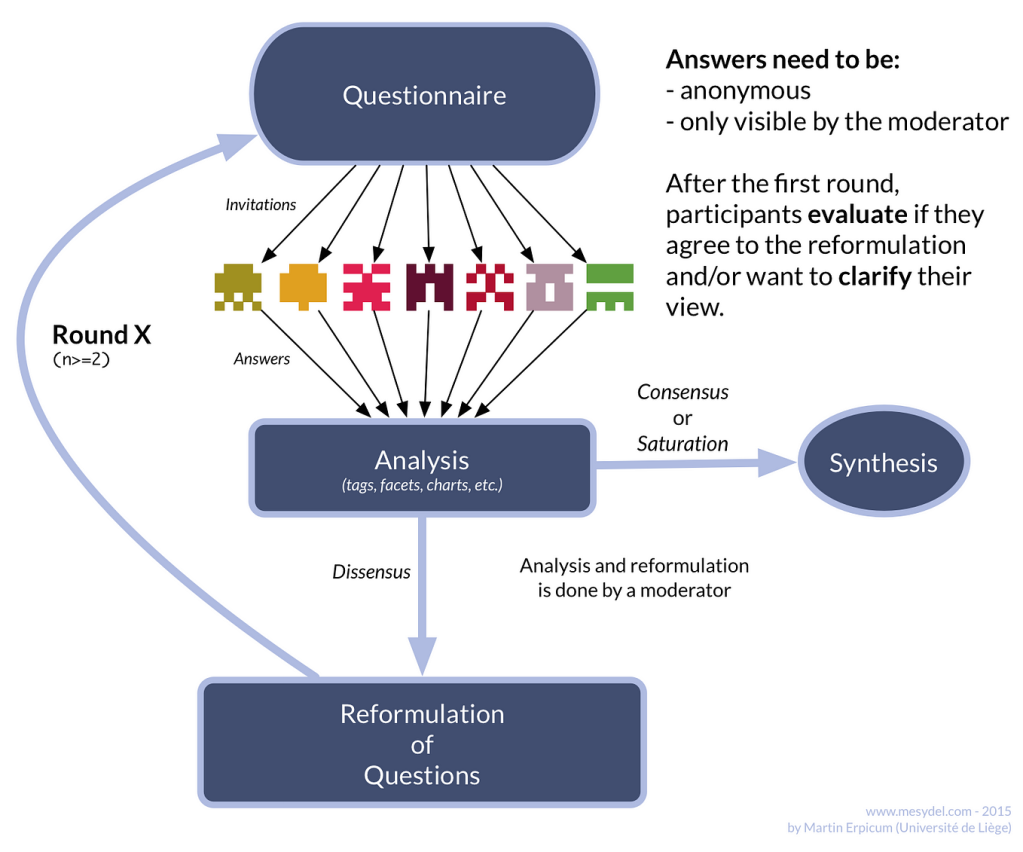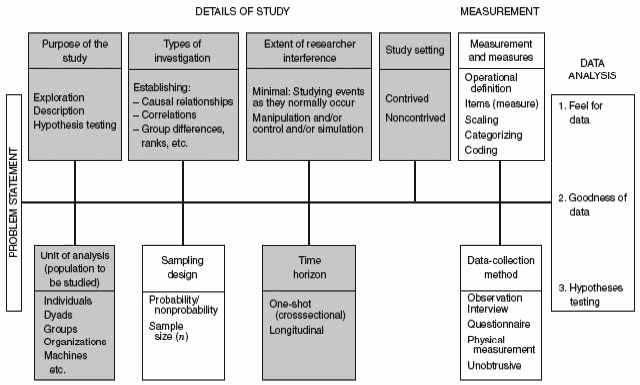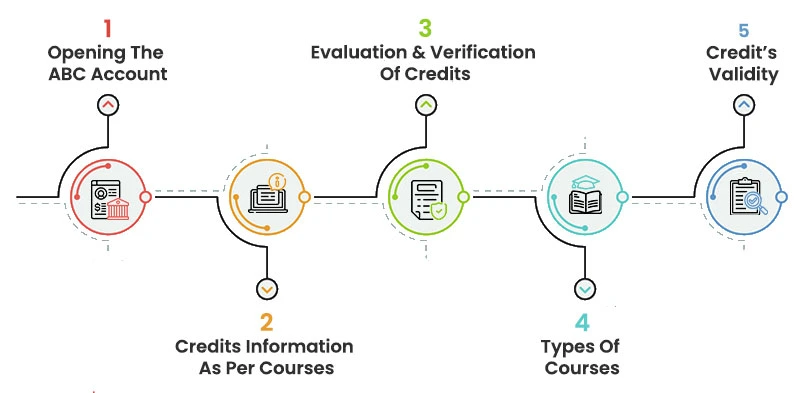Mohd Mushtaq
Research Scholar
Department of Education and Training
Maulana Azad National Urdu University Hyderabad-32
Abstract:
With the fastest eras of information communication technology, Education requires an innovative methods and strategies of teaching learning process. The relationship between technology and education at all levels is bi-directional. According to NEP 2020, Digital India Campaign is helping to make over the whole nation into a digitally empowered society and knowledge economy. While education will play a critical role in this transformation. ICT play an important role in the improvement of educational processes and outcomes. The present study is to explore the recent trends of ICT and role of ICT in Indian higher education system. Finding of the study revealed that the usage of ICT in education will increase the interest, motivation, excitement and learning capacity among students during the teaching learning process. ICT enhance the learner interest, gives flexibility to the students, enhance motivation, give freedom to the students, increases the learner potentials and capabilities etc. Some resources of educational technology such as smart devices, digital cameras, social media platform, software applications and better facilities of internet. Further found that when we have best resources according to the recent trends of ICT and facilities for the implementation of information communication technology, the teaching process will be skilful and reached at higher standard and students will gain more and more knowledge. Education through ICT is very effective and successful such as through the interactions between students and teachers, peer groups and course materials etc.
Keyword: Information Communication Technology, Recent trends, teaching learning process, Role of ICT, Indian education system.
INTRODUCTION
Education is critical in modifying an individual’s behaviour to meet the demands of the present situation. As a result, it has a significant impact on societal change. Due to the rising of population emergence of information technology and education is also going bi-directional. Hence education play a vital role in changing the society as well as the modification of behaviour of an individual. For the betterment of education innovative technology are applied in e- learning to enhance the quality education. Online learning is the combination of tool which we can use through the websites. In online learning students can obtain knowledge from a website, it is considered a more flexible learning strategy. They can download appropriate learning materials, as well as use the mail system and a variety of social media sites where teachers and students can interact and learn by sharing their perspectives. Emergence of Innovative applications of computer in the teaching learning process increasing day by day and it includes e- learning, computer learning, network-based learning, intranet based and internet-based learning and also includes many strategies of learning such as; text, video, animations, audio, and virtual /pure online environment. ICT, stands for “information and communication technology,” was first used in 1992. Science, technology, and engineering use ICT as a discipline and management technique to manage information, its use, and involvement with socioeconomic and cultural issues. In the current situation, ICT tools are usually overlooked. The traditional educational system was insufficient to hold a student’s attention in the developed world and in the age of modern science. The present methods also struggle to fulfil the needs of learning among students. Predictable processes of teaching and learning which brought knowledge as bits, it includes memorizing theories, justifications, facts and principles that do not achieve teaching objectives. For effective teaching learning process, new and innovative strategies must be personalised to increase the interest of the students. Technology plays a vital role in teaching learning process. At current time development of technology is very useful for teaching learning process. Educational technology is made up of two words education and technology. Education is the process of attaining and imparting knowledge, skill and attitudes. Technology denotes approaches as well as technical devices. Technology is the techniques of science and methods of obtaining new knowledge related to technology and others field such as, arts, science and specifically professional courses. National Council for Educational Research and Training defined that educational technology as the means of three different things includes with progress, application and evaluation the first thing is strategies/techniques, second is system and the third one is aids to improve overall teaching leaning process. In present scenario of education, e-learning is the most recent kind of ICT applied to improve and accelerate teaching and learning. It is a well-known fact that ICT has entered every aspect of life and that education has spread to practically every country in the world. E-learning offers a variety of applications and accessibility to students seven days a week, 24 hours a day so that anybody can participate in class at any time and from any location using a variety of communication methods. E-learning in India has modified the evolving characteristics of instructional materials and created new educational opportunities. ICT is a type of technology that makes it possible to conduct information-based activities. These include obtaining information, processing data, and gathering, processing, and displaying data. Communication and cooperation are especially critical in these efforts. It has evolved into ICT, or information and communication technology. As a result, an online teacher makes up for the absence of a physical classroom by creating a friendly atmosphere where all students feel at ease taking part in online lessons. By offering flexible locations, class schedules, and the world’s best content, it considerably aids in the migration of our lives into the digital world.
REVIEW OF RELATED LITERATURE
Goyal, and Bhagat (2010) Factor that affect information and communication technology usage: A case study in Management Education. In this study survey based research was conducted under 458 respondent 57 teacher and 401 students from different background. The finding of the study show that both students and teachers gave significant importance to pedagogy and ICT is very effective in teaching learning process for teacher as well as students. Usage of information communication technology in teaching learning process gives flexibility to the students, engaging students, better relationship between teacher and students, students and peer group and increase students motivation, students interest, enhance capability of students and freedom to students. Some pedagogical factors are relevant for the effective usage of ICT such as, usage of technology in daily routine, development of ICT day to day life, some technological device like reliability of ICT, IT and data security etc.
Amit Mahajan and Dhirendra Sharma (2012) conducted a study on Strengths Weaknesses, Opportunity and Threats analysis of information communication technology infrastructure and services in Jammu University. In this study the researcher revealed that the university have a better ICT infrastructure and services for the students. ICT services play an important role in teaching learning process with the experts of technology it increase the student’s opportunity, identify the weakness of students as well as researcher and give greater chance for improving the research work. Result of the study show that most of the institution want a better facilities in ICT for teaching learning process and same as it is University of Jammu have better facility and want to developed institution in information communication technology.
Ulka Toro and Millind Joshi (2012) conducted a study on information Communication Technology Review of Literature from the Period 2004-2011. In this study the researcher found that ICT play a vital role in teaching learning process at higher education level. Around the world emergence of technology increasingly day by day and moving it into the digital society. ICT is being more important in 21 century among teaching learning process. ICT help in improving the weaknesses and strength of the student at higher education. Finding of the study revealed that the new information communication technology tools have basic produced significant transformation in industry, agriculture, education, medicines, engineering and others fields. The new teaching approaches involve the use of audio-visual, computer and telematics tools on the part of lecturers.
Syed Noor-Ul-Amin (2013) a study on an effective use of information and communication technology for education and learning by worldwide knowledge. The purpose of this study is to explore the usage of technology in teaching learning process. In past few years the usage of information communication technology is changed. The higher education system is highly influence by information communication technology and quality of education for improving the quality of education and application of ICT. In this study the researcher explore that the ICT not effected on learner styles but also effects on teachers way of teaching. It enables students centered learning and increase the overall significance of ICT in education as well as teaching learning process. In this study the researcher identify and assess significant strategies in national as well as international research and effective use of ICT for education with respect to the teaching learning process, Quality of ICT and accessibility of education ICT and learning motivation, ICT and learning environment, and ICT to enhance the educational performance. The researcher further found that ICT can show a very less significant role in overall development of teaching learning quality and students oriented learning modules in recent education system. Usage of ICT is very helpful in teaching learning process which enhanced the teaching strategies.
Ishtiaq etal. (2017) conducted a study on the effects of information and communication technology on the students’ academic achievement and retention in chemistry. Experimental methods were used for the study. In this study 50 students of 9th class belonging to the Kohsar Public School and College Latamber Karak under sample random sampling were selected. The study is based on equalling groups that is based on pre-test and post-test. Mean average, standard deviation, and t-test were used for analysing the data through statistical analysis. In this study the researcher found that the Information communication technology have positively effect on students’ academic performance and retention and ICT was found more effective, interesting and motivating for the students as well as teacher.
Mushtaq Ahmed Patel (2020) conducted a study on Open Educational Resource a teaching-learning tool in the times of covid-19 in India. In this study the researcher found that open educational resource is an innovative approach in teaching learning process. OER help the students as well as teacher for accessing the material easily and without time being. The teacher and student can access the material through some electronic devices such as, computer, mobile phone, desktop, smart phone and tablets etc. The researcher further found that that individuals are making isolated efforts with few unorganized governments and non-government agencies efforts.
Mushtaq and Banwaree Lal (2022) conducted a study on Blended Mode of education and its relevance in teaching learning process. In this study the researcher try to find out the emergence of technology in teaching learning process. The main objectives of the study is to explore the features, key benefits of blended learning, role of teacher and students in blended learning environment and infrastructure required for blended learning classroom. Result of the study reveals that blended learning is the combination of learning where students learn through offline mode (physical presence) with online instruments in teaching learning process. Blended learning is more effective, interesting and motivated for the students as well as teachers and enhance the learning potentials, remove the relationship gap between teacher and students and give freedom to the students. The implementation of blended learning requires better infrastructure, good trained teachers, experts, and a better system of technology for the effective and interesting teaching learning process. And further found that face to face teaching learning process with the use of online instruments such as projectors, smart board, laptop, desktop, and some software application increase the learners and teacher capabilities, interest, motivation, learning potential, problem solving skills, creativity, cognitive power and practice of the learners in teaching learning process.
OBJECTIVES
1. To study the Role of ICT in Indian higher education system.
2. To study the recent trends of ICT in Indian higher education system.
RESEARCH QUESTIONS
1. What is the role of ICT in Indian higher education system?
2. What is the recent trends of ICT in Indian education system?
METHODOLOGY
In this study Qualitative methods of research was used to analyze the role of ICT in Indian higher education system and recent trends of ICT in Indian education system for the study.
ROLE OF ICT IN INDIAN HIGHER EDUCATION SYSTEM
ICT plays a significant role in teaching learning process, strategies of Information Communication Technology in administration, role of ICT in research, ICT as a Change agent in Society and role of ICT changing in Higher education. In day today life Information communication Technology play an important role in the overall educational process encompassing from endeavor to the application of technology in handling key issues of access, fairness, administration, effectiveness, teaching process, techniques or strategies, quality, research and development. Information Communication Technology gives insight to the students and teachers for the development of education and its plays important role to make effective teaching learning process at higher education level. Use of ICT in higher education give establishing a forceful edge by contribute to improve the service among staff and students, enhanced learning process among students and increase experience towards teachers in teaching learning process and research also. ICT plays a significant role in administration of educational institutions for the usage of prevailing resources and make easy administration tasks such as, student administration, staff administration, general administration by removing the work load of paper and exchange the physical conservation of record keeping to electronic maintenance of records which helps in easy recovery of any material of students, staff and general with in a section of seconds can access the essential information and knowledge. Combination of ICT in higher education increases the excellence of research work and more number of students enrolled in the research work in the different fields. Information communication technology enables the connections throughout the world in all disciplines and make social networking. It saves time, money and struggle to the researchers in their research studies. Information communication technology is most essential for computing and analyses of data in quantitative works. Some software of ICT is beneficial for analyzing and interpretation of data such as, excel, SPSS, statistical techniques for social science, online analyzing calculators etc. usage of information communication technology is beneficial for the researcher where the researcher scholar identify the literature reviews making objectives hypothesis and methodology in research work and using ICT in an appropriate situations. The advancement of higher education in India combined with the need to stand and be competitive in an international situation needs a good decisions to be taken rapidly and effectively. This has increased the opportunity and difficulties of administration, thus making it essential to implement different approaches of higher education administration. The increasing student population in higher education accelerated the necessity of for information communication technology to process, recover and store data and information in a quick basic and particular patterns. The attentions of electronic administration in higher education is on the establishments of an actual electronic administration by taking care of prevailing resources in the form of economically. The concept of traditional classroom moving from black board, notebook, pencils to an online education such as; computer software, internet, some apps of teaching and learning. Besides that the ICT change the teacher centered approach into student centric approach and the duty of teacher is coach, counselor, mentor and knowledge provider and the teaching learning process provide real time problem solving methods, intellectual reasoning and creative thinking also.
HIGHER EDUCATION: The students of under-graduation, graduation, MPhil, PhD and post doctorial belonging to the different colleges, and universities are falling in higher education. Different curriculum and co curriculum covering different disciplines like science, arts, medical, non-medical, commerce, computer science, social science, engineering, mathematics culture and humanities. The government of India take an initiates in the form of SWAYAM that is providing MOOCs courses with certificate at the completion of course.
RECENT TRENDS OF ICT IN INDIAN EDUCATION SYSTEM
The global usage of internet has increased the demand for spreading of educational programmes. The highest advantage of using ICT tools is that it reduces carbon footprint. Usage of ICT tools allows e learning to take place in virtual learning environment. Online tools and mobile phones are very effective to promote learning. Today’s learners are tech understanding. In order to make learning interesting mobile phones can be used by learners to explore. From young age learners need to be taught the safety measures to be taken during natural disasters. Initially this can be taught with the help of mobile phones where primary learners can learn about the safety measure through mobile phones. With the help of mobile phone students can watch cartoons based on natural disaster. This will help the students to understand the concept easily and with the help of mobile phones leaners can get access to information. Artificial intelligence is the current trend in education. Teaching artificial intelligence at school is very important. Schools should focus on three areas first the learners should learn with Artificial intelligence that is they need to know how to use them, secondly, they should learn about artificial intelligence this will enlighten them on the techniques and technologies involved in artificial intelligence. This will bring awareness to know its impact on human lives. Especially in building up of values and skills for life. It has the potential to transform education therefore it is essential to include artificial intelligence in education to meet the goals of sustainable development. With the help of artificial intelligence, it is possible to promote equitable quality education and it provides opportunities for lifelong learning. In recent trends of education blended learning plays an important role in teaching learning process. Blended means mixed up of traditional as well as virtual classroom where teachers and students presence are compulsory. Teacher imparts education via traditional classroom with the use of information communication technology such as, power point slides, pdf, videos, Google classroom, Google zoom, Google meet, Edmodo applications and some gamification applications. After Covid pandemic in higher education university grant commission recommended to the institutions 40% syllabus should be taught in online mode and 60% syllabus through offline mode.
Technology is a significant element in students’ education as well as teacher training programmes. Through digital media platform students have access knowledge and information without any restrictions. ICT is essential to pre-service teacher education programs in the twenty-first century. Without adequate ICT expertise, it is impossible for a teacher to perform in their classroom, hence it cannot be considered to be complete. In day-to-day life, attention is also located on diverse educational philosophy and educational practice based on the various that developing requirements of our society. These theories and practises suggest that teacher education has also experienced alterations. It makes wisdom that new technology must be merged into the teacher education. Along with having strong perception towards teaching skills, teachers also need to have the correct attitudes and values. The minimum requirements of any training programme are that it should assist the learner in obtaining the fundamental abilities and aptitudes of a successful teacher. Inter- disciplinary approaches, correspondence courses, orientation courses, and other innovative developments in education are currently popular especially for teacher and students also. Other methods used in education include team teaching, programmed instruction, micro teaching, and simulations teaching are beneficial for the learner. Action research is now used in classroom during teaching learning process and teacher education as well. ICT assists as a portal to the informational world and aids in keeping students as well teacher up to date. It promotes knowledge, skill, learning aptitudes, potential, research aptitudes, online course teacher and student relationship, skilled based course and learning strategies also. Some beneficial approaches for students and teachers are as under;
- E- Learning
- Online/ virtual learning
- Blended learning
- Mobile learning
- Artificial intelligence
- Open and distance education
- Learner centred environment
- Learning management system
Technology is nowadays being used in the classroom by Indian higher education. Technology includes some online approaches during teaching learning for the effectiveness of teaching learning process. Such approaches are laptops, LCD projectors, desktops, Smart classrooms, online video lectures, conferences, workshop, seminar, research webinar and memory sticks. ICT is beneficial for the teacher in teaching learning process. Because teachers are the only ones who can give pupils a bright future. Some of the recent trends are as under;
- Mobile Learning. With the emergence of technology the combining of software and hardware are generate new advances “Smart Phone” that is the essential tools in day to day life. A smart phone have advanced fixed technology in the field of industrial and telecommunications. Mobile devices with internet connectivity and computational power are projected to soon replace personal computers as the official appliance in classrooms.
- Cloud computing. Applications are increasingly moving away from independent desktops and laptops and onto server farms that can be accessed online. This trend will result in the availability of less expensive information appliances that do not need the size or processing capacity of a PC, which will have significant implications for educational systems. Providing interconnectivity to access data stored in the “cloud” will be the challenge.
- One-to-One computing. Around the world, the tradition of classroom environment is to provide knowledge and information from the teacher to students and the application of information communication technology. In this setting of classroom students can learn through individual devices such as mobile phone, individual laptop/desktop, tablet etc. classrooms should prepare for the universal availability of personal learning devices.
- Universal learning. With the development of technology required strong network connection and better infrastructure for teaching learning process all over the world. Information communication technology gives great opportunity to the students for obtaining knowledge without time constrain, gives flexibility to students for accessing their knowledge from anywhere and at any time. This trend of ICT requires a rethinking on traditional classroom environment
- Gaming. According to the Horizon Report, a current survey by the Pew Internet and American Life Project revealed that the excessive playing of online games are found in youth or young peoples and this types of activities can-not benefitted for the health. Most of the young people are interconnected with the society through games
- Personalized learning. Education systems are increasingly day by day and exploring the use of technology for better understanding among student’s knowledge.
Some Current trend in Information Technology are as under, SWAYAM (Study Web of Active-learning for Youth Aspiring minds) Learning Management System, MOOCs, Robotics, Open Educational Resource, Cooperative Learning Strategies (CLS), Artificial Intelligence and Machine Learning etc. Integration of technology in present situation plays a vital role in our education system as well as outside the educational background. But, education will be able to plays its role more effectively by making the individuals creative, innovative and efficient. Educational technology can immensely contribute to the qualitative as well as quantitative improvement of education.
CONCLUSION
This study examine that the recent trends of information communication technology and role of ICT in Indian higher education system. ICT plays a vital role in the school education as well as higher education system in India. During Covid pandemic all the formal education system was unfortunately stopped, meanwhile ICT was started day by day and spread over the world. ICT can immensely contribute to the qualitative as well as quantitative improvement of education.According to National Policy on Education 2020 technology will be benefitted for the students as well as teacher. Technology integration play an important role in teaching learning process. Some recent trends of ICT such as; Learning Management System, MOOCs, Robert, Cooperative Learning Strategies, Artificial Intelligence and Machine Learning, Moodle, Open Educational Resource, Online Assessment and Portfolio, Smart classroom, Electronic Devices, and some software application are Google meet, Google classroom, Zoom, WebEx, Study Blue Flashcards, Schoology, Quiz, Teacher Kit, Animoto, Socrative, Seesaw, Tether, FoxFi, Too Noisy, Answer Garden, Slido etc. Finding of the study revealed that usage of technology such as projectors, smart boards, laptops, desktop computers, and some software applications makes learning convenient and enhanced learner and teacher capabilities, interest, motivation, and learning potential as well as problem-solving abilities, creativity, and cognitive ability. If the proper infrastructure would be available with the recent trends of technology in Indian higher education system and trained teachers in information technology then the educational standard will be high.
REFERENCES
Amit Mahajan, Dhirendra Sharma (2012). A Technical SWOT Analysis of ICT Facilities: Jammu University, Jammu, India. International Journal of Advanced Research in Computer Science and Software Engineering. 2(12): 128-139.
Goyal, Ela; Seema Purohit and Manju Bhagat. 2010. ‘Factors that affect information and communication technology usage: A case study in management’. Education journal of information technology management, 21 (4) 38-57.
Hussain, I,. Suleman, Q,. Naseer ud din, M,. & Shafique ,F. (2017) Effects of Information and Communication Technology (ICT) on Students’ Academic Achievement and Retention in Chemistry at Secondary Level. Journal of Education and Educational Development. 4(1)73-93.
Mushtaq. M,. & Meena B,. L. (2022) Blended Mode of education and its relevance in teaching learning process. Post Covid Education Scenario in India. G.H.G. Khalsa Colleges, Gurusar Sadhar Twenty first century publications Patiala. 73-78.
NEP (2020). New Education Policy. Ministry of Human Resource Development Government of India. Retrieved from www.education.in
Patel. I. Mushtaq (2020) the OER – a teaching-learning tool in the times of covid-19 in India. Global and Lokal Distance Education- GLOKALde, October 2020, Vol 6 (2), https://www.glokalde.com/pdf/issues/18/Volume6Number2.pdf#page=91
Syed Noor-Ul-Amin (2013) An Effective use of ICT for Education and Learning by Drawing on Worldwide Knowledge, Research, and Experience: ICT as a Change Agent for Education, Department Of Education, University Of Kashmir, , 2(4), 38-45,
Ulka Toro and Millind Joshi (2012).ICT in Higher Education: Review of Literature from the Period 2004-2011.International Journal of Innovation, Management and Technology. 3(1):20-23.
UNESCO (2002). Information and Communication Technologies in Teacher Education, A Planning Guide. Paris: UNESCO.


















































































































































































You must be logged in to post a comment.